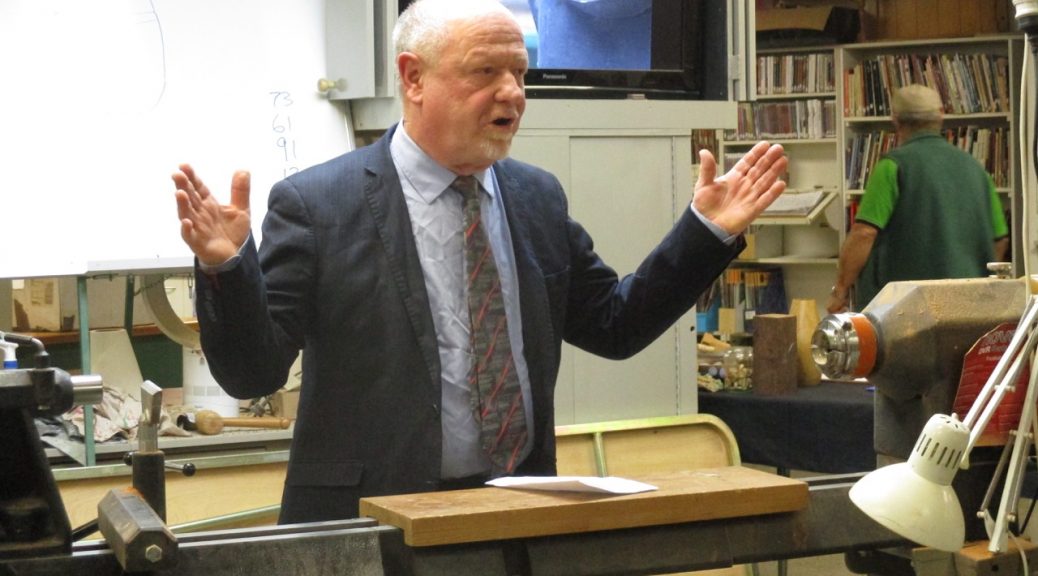Club Meeting: 29th August 2018
Report by: Dave Armstrong
Michael introduced himself as owner operator of Liquid Polymer Glass Ltd. He commenced his discussion with an overview of his company and some of the original history that caused its development. Their main product centred around Bar Tops, providing hard wearing coatings that could withstand the constant beating they received from the knobbly bits on the bottom of beer bottles.
The original resins they used were not clear and they set out to address that issue settling on an Epoxy type sourced from Europe. However they required considerable development in order to get the required curing result both hard, resilient and clear with an acceptable cure rate. To that end Michael stressed the need for exact proportions of resin and hardener and to achieve this they settled for a simple method using weight (i.e. 200gr resin / 100gr hardener) as opposed to volume. He showed us examples of various suitable scales with differing degrees of accuracy and cost. Suitable scales can be bought for less than $20 and can measure weight as little as the difference between two postage stamps.
Mixing is extremely important and instructions must be followed precisely to avoid bubbles and to ensure correct resin to hardener ratio within the mix. Michael prefers to Double mix the brew. To achieve this he ensures all product is scrapped away from the bottom and sides of the mixing vessel and stirred in well, then transfer the mix to a clean dry vessel and repeat the mixing before pouring into your project. Ideally ambient temperature should be around 20deg C to provide a cure time of between 12 to 24 hours and in some cases depending on film thickness up to several days.
Michael went on to discuss methods of colouring resins including the use of powders, inks, paints and dyes. Liquid Polymer Glass use oxides only in their work.
Problems were addressed and Michael again stressed the need for patience and to keep your mind on the job at hand. NEVER answer the phone or take unwanted distractions when doing a mix/pour as the likelihood of failure is high due to inadvertently forgetting a step or using incorrect proportions. He also mentioned that Air and Moisture are your enemies and work must be sealed to prevent its affects. Several methods were discussed to achieve this but it is as simple as coating a void or trench with a coat of the resin, PVA glue or water based paint.
Never add more hardener thinking you will speed up cure time as this will only weaken the cured resin. However you can add a tiny amount more resin to give a slightly longer cure time. Michael also mentioned viscosity and that the resin can be warmed slightly to make it flow better but NEVER heat the hardener.
Slow and cool cures are achievable but contact Michael for an appropriate brew as the resins are quite different and the exothermic temperatures can be quite extreme.
As usual, it is preferable to layer smaller amounts in your pour than one big deep run. Although it is possible to achieve different levels of clarity (i.e. Satin,Clear etc) in your result he said the easiest way was to simply cut back the surface to get the desired effect.
Michael’s presentation was very enlightening and I feel I almost had brain overload but he imparted his knowledge clearly and he answered many pertinent questions from the floor throughout his talk but he always reverted to his topic. Of course he is keen to promote his company but it is rare today to find a welcoming and knowledgeable character keen to help fellow woodworkers.
Thank you Michael for the colour samples and information sheets given to members.
Footnote – Don’t put samples in your pocket. I thrust my hand into my pocket to get my car keys only to be covered in red additive which spread its self around the car and my wallet.
